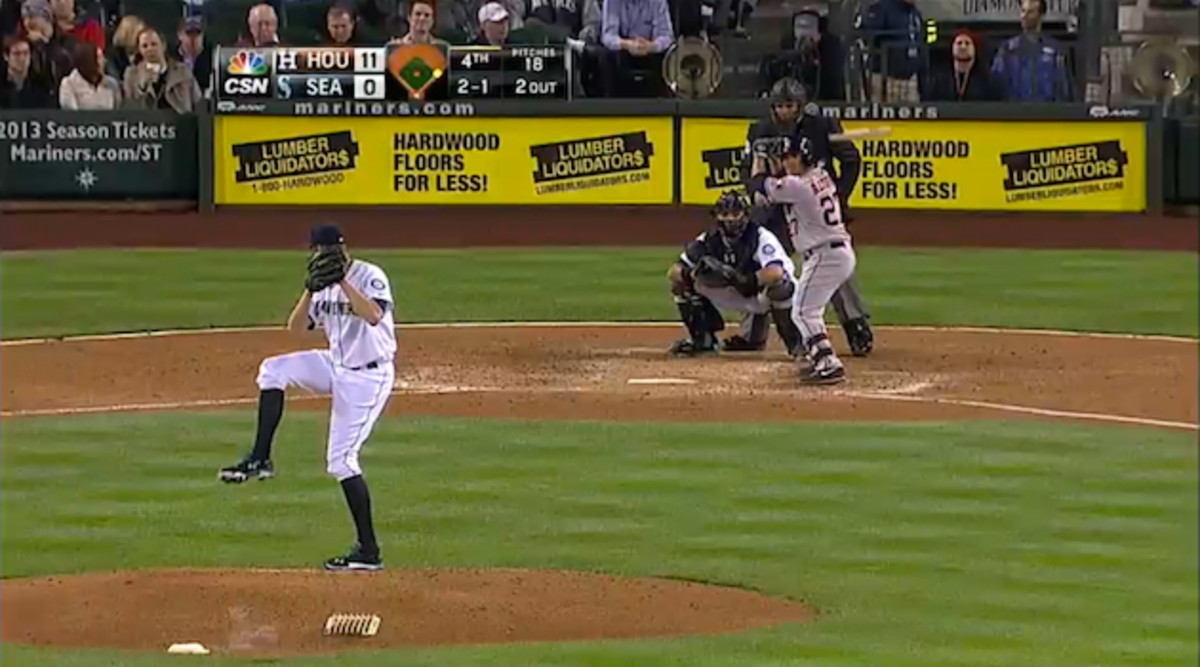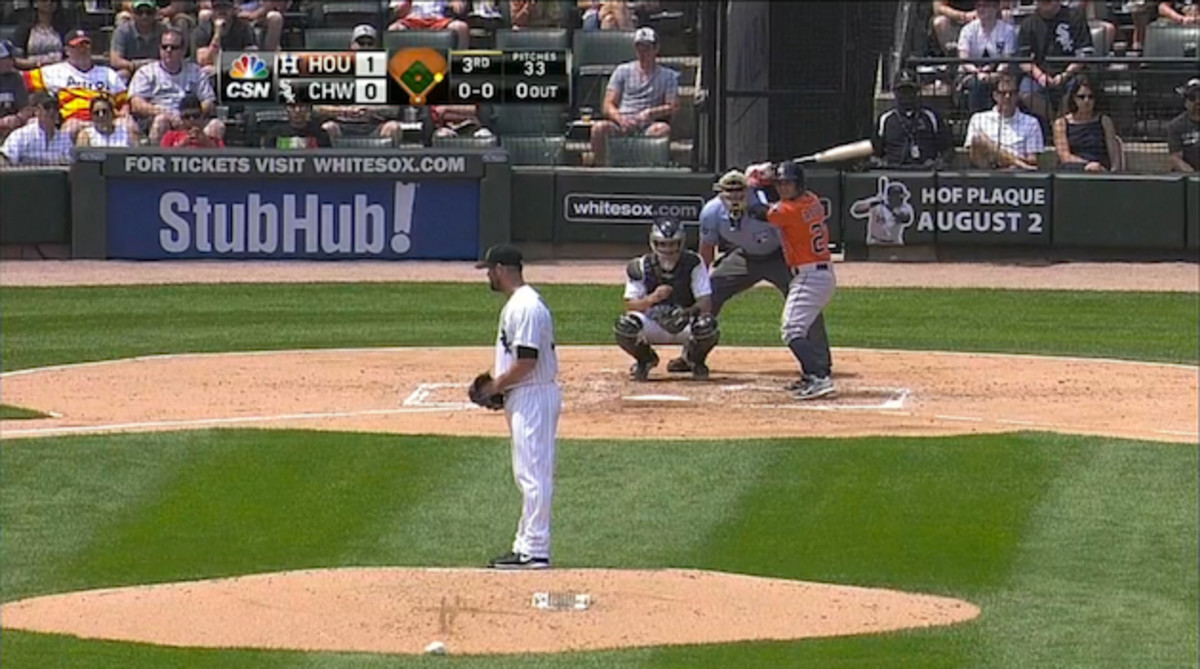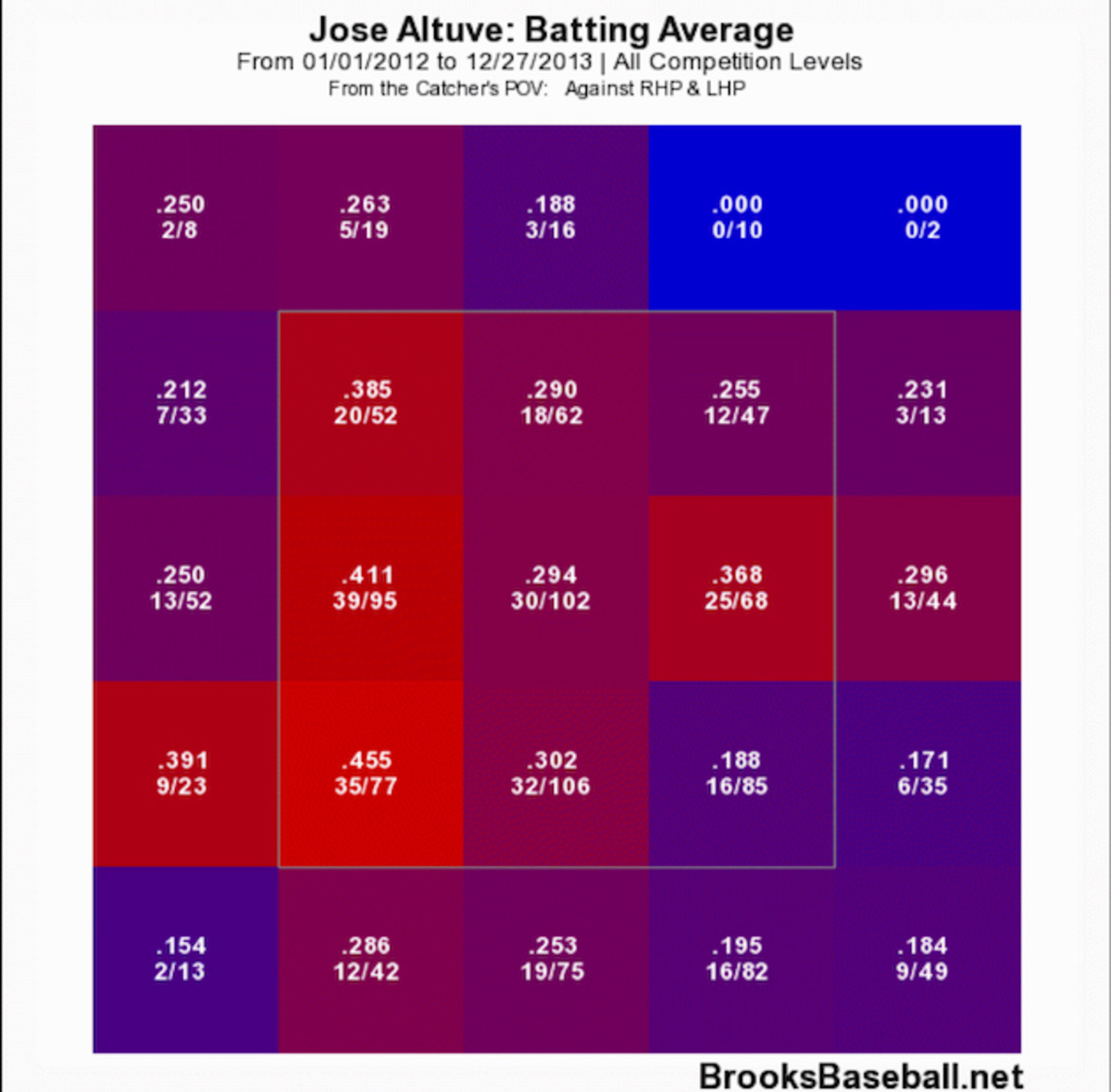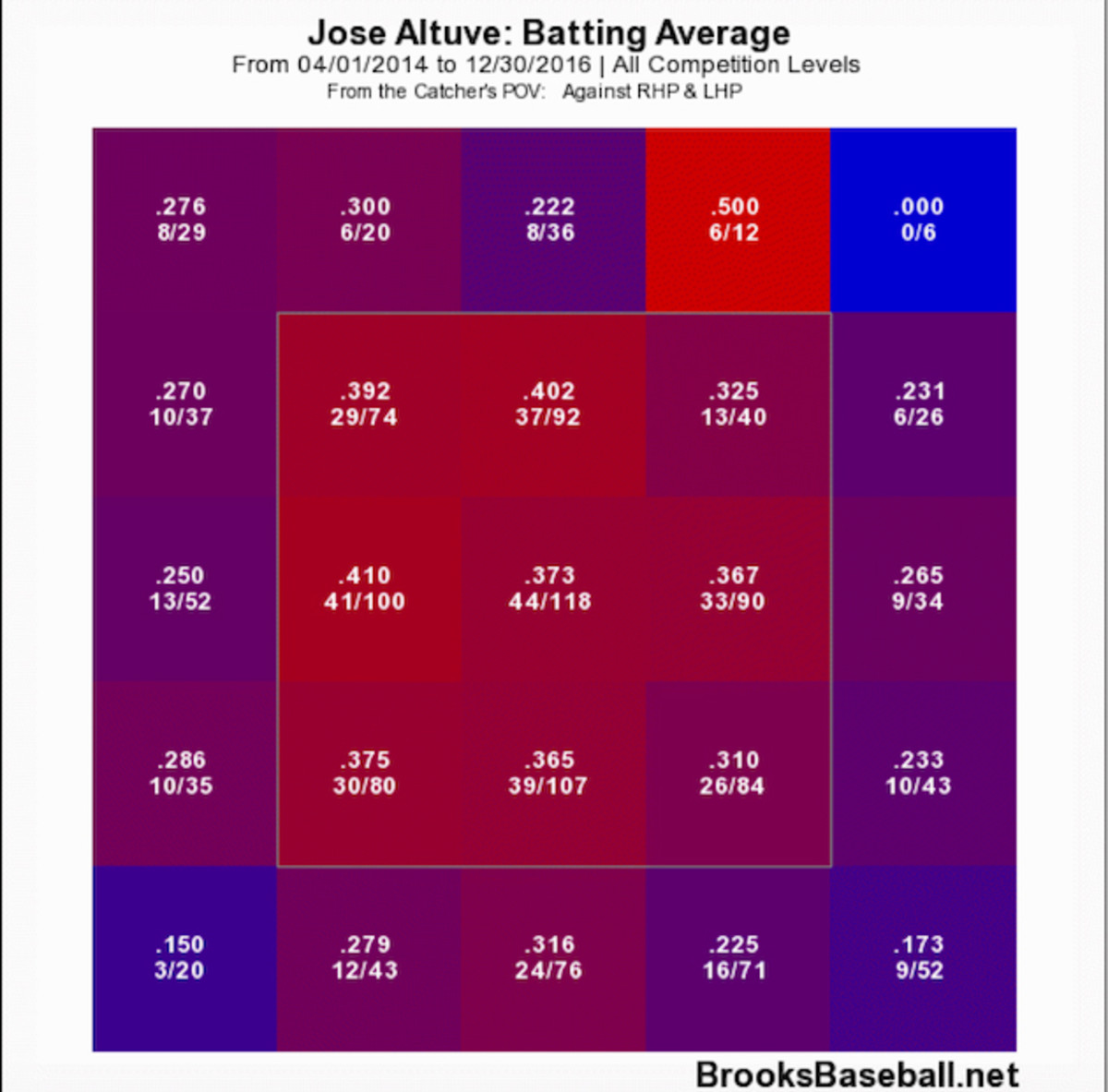Power binge: Examining why Jose Altuve is hitting harder than ever

Get all of Michael Beller’s columns as soon as they’re published. Download the new Sports Illustrated app (iOS or Android) and personalize your experience by following your favorite teams and SI writers.
At the end of the 2014 season, Jose Altuve, then 24 years old, had 2,243 plate appearances under his belt. Altuve had steadily progressed as a hitter in his first three-plus seasons in the majors, and the hard work resulted in a batting title at a cool .341 batting average that year. All told, Altuve was a career .302/.340/.401 hitter through that season, and what he lacked in the power department he more than made up for by getting on base, stealing bases and playing a strong defensive second base.
Something changed for Altuve in 2015. He still made a ton of contact and hit for a great average, slashing .313/.353/.459. But that last number should make you pause—Altuve also hit 15 homers. Heading into ’15, Altuve had a total of 21 homers in those 2,243 plate appearances, and never had more than seven in one season. Suddenly, Altuve was more than a guy with a knock for making contact and hitting line drives. He was one with some discernible pop, as well.
Hitting report: High HR rate has big impact on fantasy leagues
So far in 2016, the newfound power Altuve unearthed last season has—if anything—increased. The diminutive Houston second baseman already has five homers in 63 plate appearances, which is tied for fifth in the majors with noted power hitters like Chris Davis and Josh Donaldson. There are a few different ways to think about pace in this context—homers per plate appearance, homers per at-bat, homers per fly ball, and so on—but no matter the measure, Altuve is on pace to set another career high in the category.
Let’s consider a few of the more important numbers at play here. First of all, Altuve will turn 26 in early May. There’s a very real chance he’s simply growing into more natural power as he enters his physical prime, but it can hardly explain such a marked jump in power, especially as measured by home runs.
Altuve’s average fly ball distance is up to 298 feet this season, which has him ranked ahead of Jose Bautista, Joey Votto and J.D. Martinez. There’s certainly a small sample size effect making its presence felt, and it would be a surprise if he finished the season ahead of those three, even if he continues to hit for power. What’s better for Altuve backers is that he had been making gains in fly ball distance the last few seasons. After starting out at 274 feet in 2012, he fell to 266.86 feet in 2013. He clawed back about four of those feet the following season before getting back to 274 feet last year.
Trade advice: Owners should sell Trevor Story, invest in David Peralta
Average fly ball distance matters because it speaks to how far and hard a player is typically hitting the ball. Anyone can run into a few pitches during a season—after all, Billy Hamilton and Ben Revere have home runs to their credit. If someone is routinely hitting the ball far when they put it in the air, though, the chances of their typical fly ball leaving the yard increase significantly. Altuve’s uptick in fly ball distance is a sign that he can be a regular 15-homer hitter, rather than the single-digit homer guy he was the first three full seasons of his career.
Not only has Altuve hit his fly balls farther since the beginning of the 2015 season, he has hit more of them as a share of balls in play. Through 2014, Altuve’s career fly-ball rate was 28.6%. Since Opening Day ’15, 34.9% of the balls Altuve has put in play have been in the air. More fly balls, and a greater average distance on those, can’t help but result in more home runs.
• BELLER: Keep up with reliever changes using our closer rankings
Let’s take a look at the evolution of Altuve’s swing, starting back in 2012. Each of the swings you’ll see resulted in a home run. Essentially, we’ve grabbed one swing of Altuve at his best from every season since he has been the regular starter at second for the Astros.
A few things are immediately apparent. When Altuve first broke into the majors, his feet were essentially aligned, and by time he unleashed his swing he was almost a bit closed. That changed by 2013, with Altuve opening up his stance. Still, he took an early stride that left him closed by time he started to swing.
The following season is when things really started to change. Most notably, look where he set up in the box versus where he was in 2013.


Since the 2014 season, Altuve has been much farther off the plate than he was in his first two full years in the majors. The leg kick is bigger, but he still striding toward the plate, resulting in a slightly closed stance when he starts his swing. By standing off the plate, Altuve is able to step into everything, which he clearly prefers, without getting tied up by being on top of the plate.
The shift seems to have worked. Below are two heat maps of Altuve’s batting average by zone. The first is for 2012 and ’13. The second is ’14 through the present day.


Altuve could always turn around a pitch on the inside corner, which is likely why he stood so close to the plate. He knew his hands were fast enough to get to pitches on the inner-third, and he was worried about covering the outside corner. His move away from the plate showed a player making a necessary adjustment that, while seemingly counterintuitive, has actually helped him become a better hitter on pitches away from him. It has also had the happy coincidence of making him more dangerous against pitches on the inner-third, where 11 of the 15 pitches he hit out of the park last year were located.
Pitching report: Drew Smyly looks like a 2016 breakout candidate
We see more of the same in 2015 and ’16, with a few minor tweaks. Altuve’s leg kick became even more pronounced last year, and he’s starting out more open in his stance this season. For the first two years of his career, his front foot landed well before he started to swing. Now he’s timing it to land just as he begins to uncoil.
It’s likely that the two biggest factors in Altuve’s power binge over the last season-plus are age and adjustments in his pre-swing setup. Altuve is just now starting his physical prime, and it’s not unusual for players to experience a natural power spike between the ages of 25 and 27. He’s also freer to unleash his power now that he has some breathing room in the box.
One more development from early this season bears watching. Altuve is swinging far less than ever, and that’s a stat that stabilizes rather quickly. His swing rate is way down at 42.8%. From 2013 through ’15, it had never been lower than 48.7%. While Altuve has always had the skill of outpacing league-average BABIP, he has never been one to take a free pass, posting a career walk rate of 5.1%. If he proves to pitchers that he is indeed more selective, he could very well force them to challenge in the zone more often. That, in turn, could feed back into his burgeoning power stroke.
